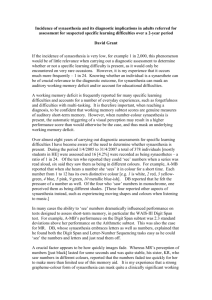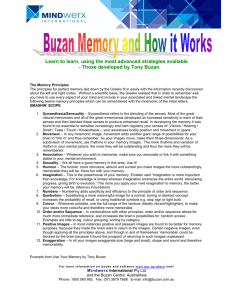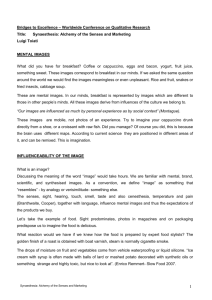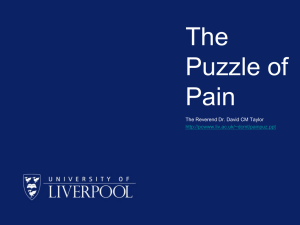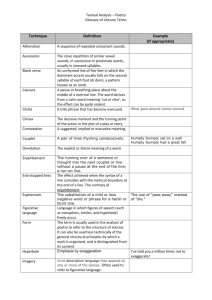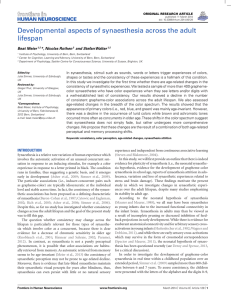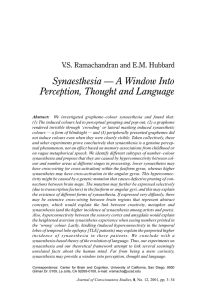BWestTalk4.ppt
advertisement
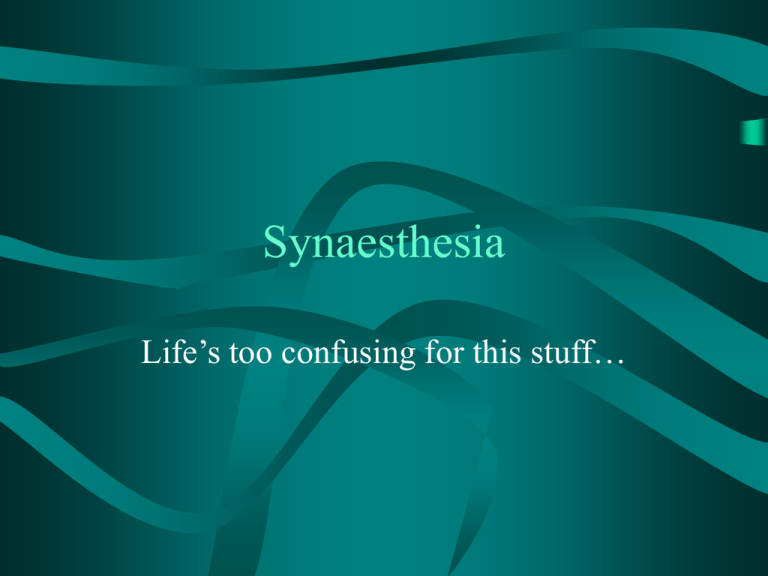
Synaesthesia Life’s too confusing for this stuff… What is Synaesthesia? • Defined as “an involuntary physical experience of a cross-modal association” – Crossing of the senses • One stimulation of a sense causes the stimulation of another sense • Greek – Syn – together – Aisthesis – perception • Five main diagnostic features – Involuntary – Sensations projected onto environment (i.e. real) – Sensations remain the same with time and situation – Memorable (often most memorable) – Emotional – causes ecstasy History of Synaesthesia • Possibly first identified/noted by Aristotle (4th century B.C.) or Pythagoras (6th century B.C.) • First reference believed to be in John Locke’s Essay Concerning Human Understanding – Speaks of a blind man interpreting scarlet as being like “the sound of a trumpet”. • Leibniz and Newton both mention in 1704 – Leibniz – recounted again a case of a blind man interpreting scarlet as being like the sound of a trumpet – Newton – Attributed colors to notes of a musical scale • Castel – 1735- Noticed same parallel as Newton, and created first color organ • Galton – 1883 – noticed synaesthesia seemed to be frequent in children • Scriabin – 1911 – composed Prometheus – Incorporates music and light • 1944 – attempt to teach “colored hearing” Types of Synaesthesia • Two or more senses crossed, usually unidirectional – 31 possible combinations • Two-Sensory: – Colored Hearing (Chromaesthesia) • Sound evokes perception of a color – Colored-Olfaction • Smell evokes color – Colored-Gustation • Taste evokes color – Tactile-Gustation • Taste experienced as shape • Multiple Sensory – Numbers, letters, words, dates, etc experienced as colors What’s happening in the brain? • Idea that it’s a mental illness is no longer valid • Positron Emission Tomography (PET) shows that different areas of the brain are active for a task for those with Synaesthesia than those without • Depends exclusively on the left brain • Associated with decreased blood supply to the neocortex, resulting in enhanced limbic expression – Leads to belief that synaesthesia is influenced more by limbic system than neocortex – Supported by the fact that there are emotions felt when a synaesthetic experience occurs • Idiopathic (natural/genetic) – Rebalancing of regional metabolism (similar to migraine) – Everyone perhaps Synaesthetic at birth, and some fail to have their senses modulated • Non-Idiopathic (developed) – Seizure (electrical discharge in brain) induced – Drug Induced – Neuron degeneration – Brain/Spinal damage – Concussion induced (noises/lights cause pain – temporary) Living With Synaesthesia • Generalized Trends – Order, neatness, symmetry, balance – More prone to unusual experiences (déjà vu, etc.) – Right-left hand confusion – Math abilities and spatial navigation below average – Superior memories • Imagine: – Conversations being painful or pleasurable from flashes of color, and not being able to concentrate on what is being said – Voices blending together in a mix of colors – Fast speech bringing a confusing mix of pictures and/or colors – Remembering things, even in other languages, simply by association with another sense (pictures, for instance) References • http://www.macalester.edu/~psych/whathap/ UBNRP/synesthesia/SYNBRA~1.HTM – Great page, lots of information
